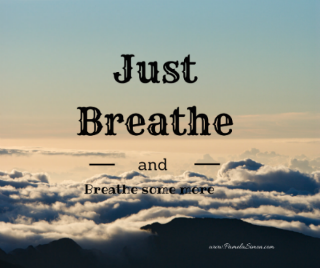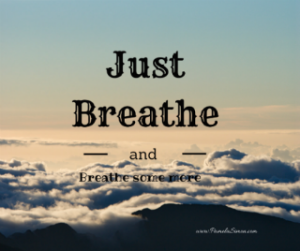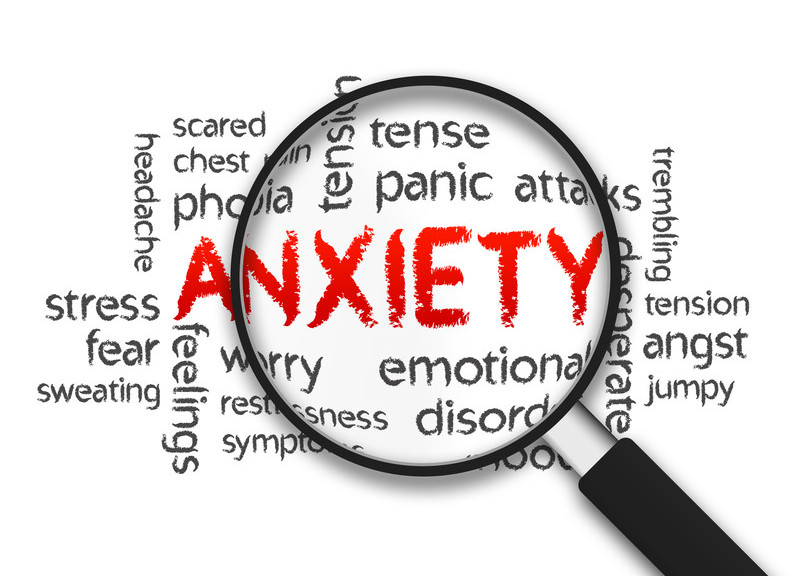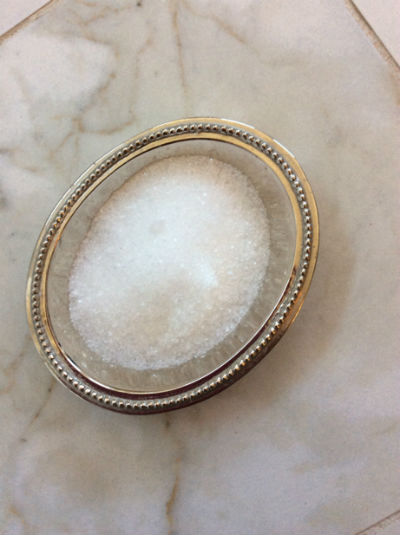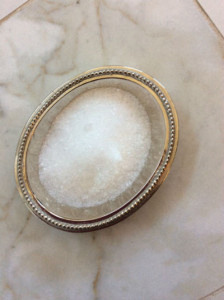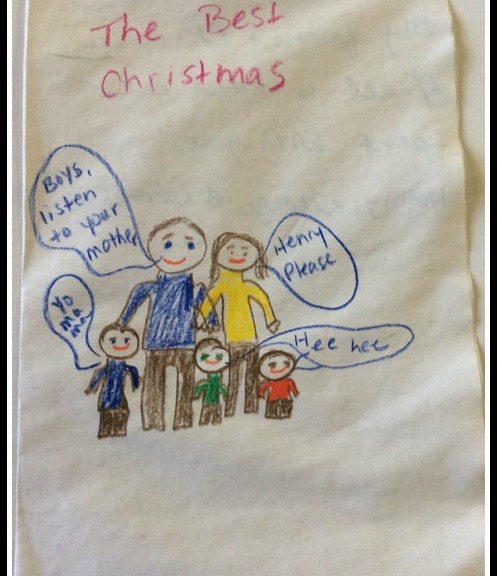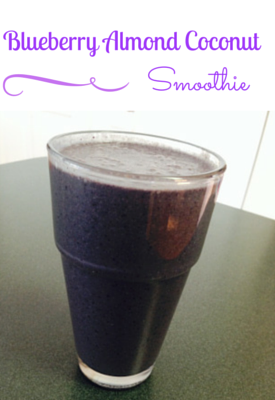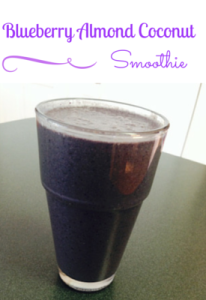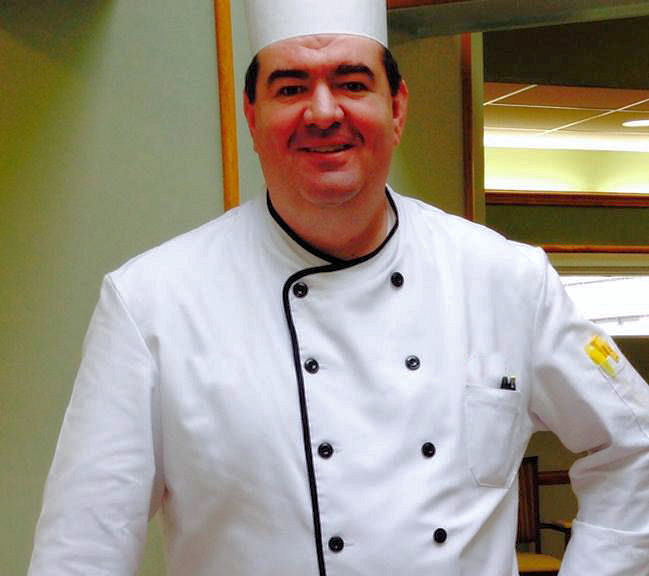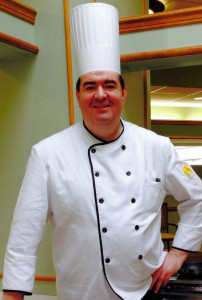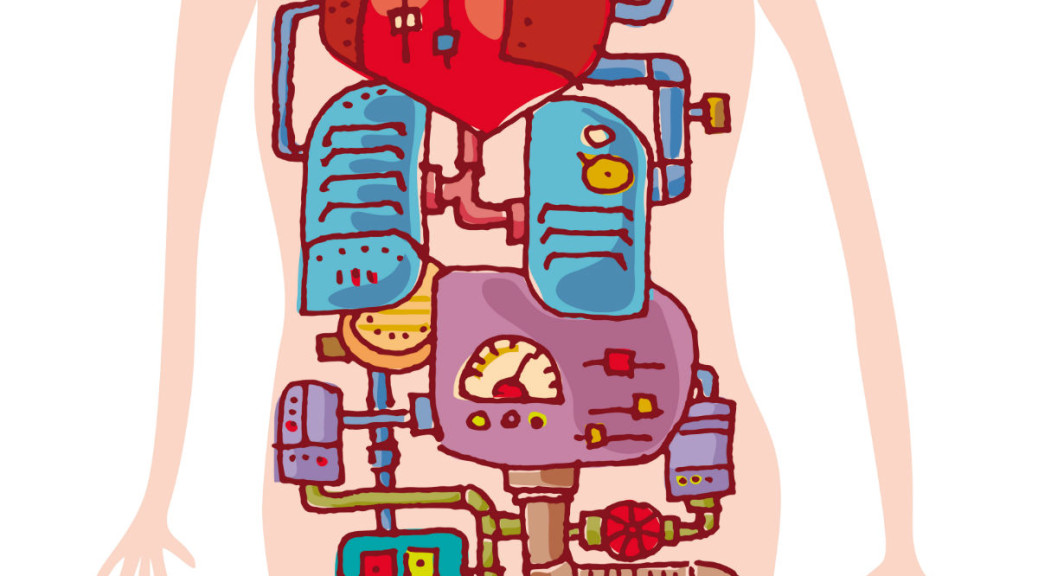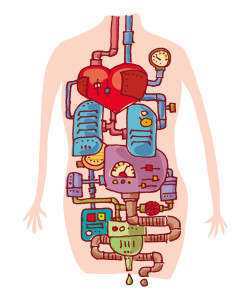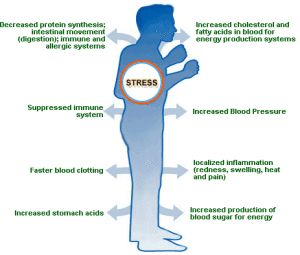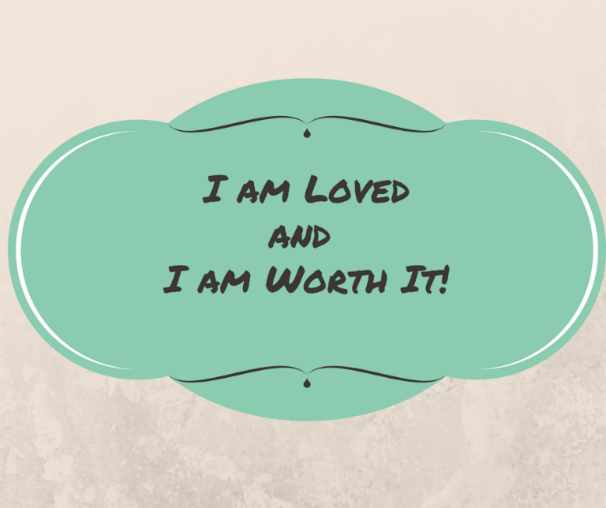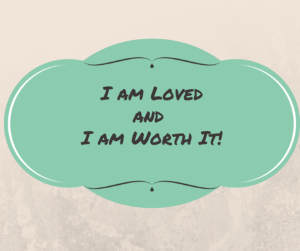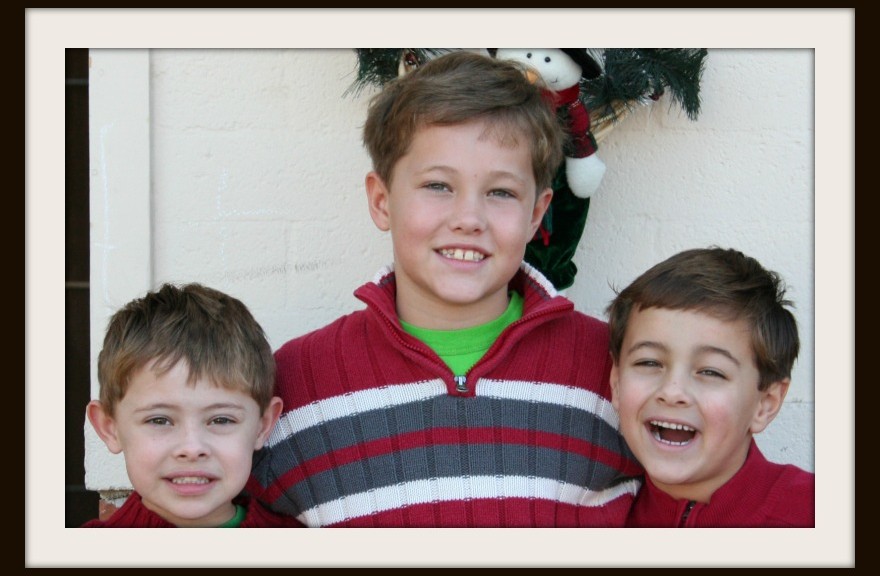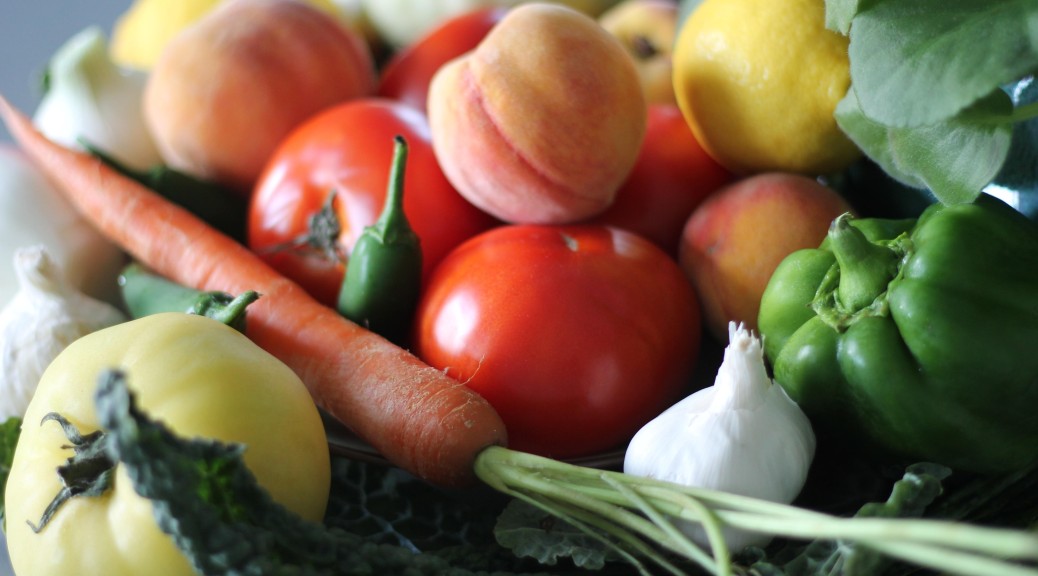Good Morning,
The holidays are upon us and I know this time of year can heighten feelings of grief, anger or sadness. So I want to discuss a topic that is very real for many people: anxiety and panic attacks.
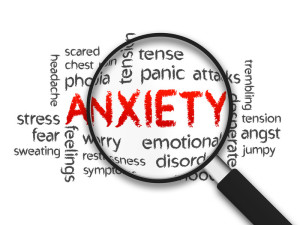
According to the National Institute of Mental Health, anxiety disorders affect about 40 million American adults age 18 years and older (that’s about 18% of the population of the United States) in any given year. Sadly, anxiety disorders now affect one in eight children.
Chances are you, or someone you know, has this disorder.
I’ve known plenty of friends and family members over the years who suffer from anxiety. I’ve listened on numerous occasions and sympathized many times as they described having a panic attack. While I empathized with the pain and fear that accompany anxiety and panic attacks, I never quite understood what it felt like to live with it…Until it happened to me.
In August of 2010 my husband Larry entered the hospital to undergo intense chemotherapy as treatment for acute myeloid leukemia. He couldn’t get a bone marrow transplant until the leukemia was deemed manageable.
One day while he was in the hospital waiting for treatment to begin we received some pretty dire news. When you face a life threatening illness it’s imperative to try and maintain a positive frame of mind in order to keep going each day. But that particular day there was no getting around the issue: if this treatment didn’t work Larry wouldn’t be around to see our kids grow up. I was devastated. But, for Larry’s sake, I became the cheerleader. Outwardly I told him not to listen to what the doctors said because he was going to make it, yet inside I was wrought with fear.
That evening I went home and fell asleep right away completely exhausted from the emotional turmoil of the day. During the middle of the night I was jolted awake by the uncontrollable shaking of my body. Furthermore, I realized my pajamas were soaking wet, my chest felt tight and I couldn’t catch my breath. Trembling, I climbed out of bed. Somehow I knew I had to get out of the wet pajamas. Still shaking, I managed to put on dry pajamas, grab a blanket and wrap it around me. I sunk to the bathroom floor and the tears came pouring out.
Perhaps it was the emotional release of the tears, but pretty quickly my shaking started to subside. Thankfully the tightness in my chest lessened and my breathing started to return to normal. I sat there in shock wondering what the heck just happened to me. Having listened to others as they described their panic attacks I knew I had just experienced my own.
I was stunned. How can this be happening?
Unfortunately Larry passed away less than two months after I experienced my first panic attack. My worst fears were realized. I went through all the motions in a fog after he died. The wake, the funeral, the return home and the return to daily life. Slowly the shock of his death began to subside and the grief came at me full force.
About a month after Larry died I found myself awake in the middle of the night once again. Just like the last time, my body was shaking uncontrollably and my pajamas were drenched with sweat. I had the same tightness in my chest and the same difficulty catching my breath. For the second time I got out of bed to change my pajamas, wrap a blanket around myself and sink to the floor. The only difference was I didn’t have to wonder what happened. I already knew: I had suffered another panic attack.
This time I cried for Larry not being with me. This time I cried because I felt such despair. Is this what my life would be like going forward? Would I just suffer one panic attack after another? Didn’t I have enough to deal with besides adding this to my plate of worries? It didn’t seem fair to me at the time. But then again, NONE of it was fair.
The American Psychological Association believes stressful life events, specifically pertaining to loss and separation, can trigger panic attacks. Please know that I’m not sharing this with you to add fear to an already difficult time in your life. I’m sharing my story with you to help, especially if you’ve already experienced a panic attack.
Not all panic attacks are as severe as the ones I experienced. To date, I’ve never had another severe panic attack like the one I described above. I still suffer from mild anxiety, but I’ve learned to live with it. And so can you.
How can you tell if you’re having a panic attack? Symptoms of a panic attack may include any or all of the following:
• Palpitations, pounding heart, or accelerated heart rate
• Sweating
• Trembling or shaking
• Sensations of shortness of breath or smothering
• Feelings of choking
• Chest pain or discomfort
• Nausea or abdominal distress
• Feeling dizzy, unsteady, light-headed, or faint
• Chills or heat sensations
Here are some tips on how you can cope with an anxiety attack:
• Seek counseling from a licensed and qualified therapist
• Practice breathing exercises, (be sure to read the upcoming Wellness post where I explain breathing techniques)
• Eat a well-balanced nutrient rich diet (in case you’ve noticed, this is a pattern that appears in almost every post!)
• Limit your consumption of alcohol
• Limit your sugar intake, as it will bring down your immune system
• Exercise, do yoga, go for a walk
• Meditate
• Consider past stressful situations and see what tools you’ve used that have worked for you before
• Journal (I will cover this in length at a future date)
• Create and use affirmations
When I woke up the morning after my second panic attack I made a conscious decision: I didn’t want to live in fear of having another panic attack. Fortunately, I had enough tools in my “wellness bag” to give me hope.
Basically, I practiced every single one of the tips mentioned above- just not all at once and not all the same time.
I was already in the care of a licensed and experienced therapist. I was seeing her once every two weeks after I realized how serious Larry’s illness was. After he died I had a standing weekly appointment. It’s been almost a year since I stopped counseling, but I still have her number if I feel the need.
I also attended group therapy at New Song Center for Grieving Children. The children broke into groups based on their age and the adults went into a separate room. Being in a group with others who have experienced a tremendous loss (spouse, child or parent) erased feelings of isolation that can come with grief and contribute to anxiety.
I began to journal again. In fact, I had turned to journaling since college to help me get through rough patches in my life. (By the way, in my case this also took care of “Consider past stressful situations and tools you’ve used that have worked for you.”)
Then I practiced affirmations. Obviously I had no control over the death of my husband and the subsequent anxiety that came with it, but I could influence my thoughts and choose positive steps to heal.
One of the leftovers of that early anxiety that I still have to cope with on a regular basis is difficulty in catching my breath. Getting valley fever certainly didn’t help, so I practice breathing exercises on a regular basis.
Really paying attention to what I put into my body took me a little longer to do. The holidays certainly don’t make this easy. But I can’t emphasize enough the importance of eating nutrient rich foods and limiting alcohol and sugar.
Limiting sugar intake is very important. If you have a child that suffers from anxiety please help your child to read labels and understand the harm it could be causing in the long run.
More and more research is being published that establishes a correlation between sugar intake and anxiety.
According to Psychology Today the Standard American Diet, which is full of sugar and fat, does not necessarily cause anxiety but it does appear to worsen anxiety symptoms and impair the body’s ability to cope with stress.
I am grateful I had wellness tools to practice daily to help me cope with anxiety.
As previously mentioned, I still suffer from mild anxiety. I’m not sure why. Maybe the rubber band of anxiety in my life has been stretched too far, the elasticity has been lost and maybe it won’t ever return to the state it was in before Larry died. But that’s ok. I’ve learned to cope with the mild anxiety attacks that I get from time to time.
I’ve even learned how to recognize the source of my anxiety. Usually it’s brought on when I’m faced with stressful situations that involve my children regarding school or their health. It can also be brought on by life events, such as the death of someone close. And I experience symptoms of anxiety if I don’t eat or sleep well or even drink a little too much in a social setting.
I do my best each day to keep my body and mind healthy. Even so, circumstances outside my control can – and do – trigger my anxiety at times. But each time it happens, I’m confident I can cope with it.
That’s my biggest takeaway: I don’t live in fear of anxiety. If and when it happens, I trust I’ll be ok.
A word of caution: if you experience any of the symptoms listed above and they don’t subside, please seek medical attention immediately. Specifically if you have continued chest pains and difficulty breathing. I’ve been known to head to the ER more than once, just to make sure! Your health is not something to be gambled with.
If you currently suffer from anxiety or panic attacks I pray you find a way to add one or more of the coping techniques mentioned above into your day.
I wish you peace.
Pam
PS. If you live with anxiety and have some positive wellness tools that helps you please leave a comment below for others to see.

